Be yourself; Everyone else is already taken.
— Oscar Wilde.
This is the first post on my new blog. I’m just getting this new blog going, so stay tuned for more. Subscribe below to get notified when I post new updates.
Be yourself; Everyone else is already taken.
— Oscar Wilde.
This is the first post on my new blog. I’m just getting this new blog going, so stay tuned for more. Subscribe below to get notified when I post new updates.
At some point in music history, there is a trend called “the loudness war,” in which music recordings seem a bit too eager to stand out. Haidak looks back at this period to know the facts and what happened in one of the most contentious times in music recording.
The objective of the loudness war is to increase the audio levels or, in technical terms, the amplitude of a track. Although it may have peaked in the 2000s, some music writers trace its origins in the analog era during the mastering process of 7″ singles in the 1940s. The advent of the compact disc (CD) paved the way for even louder recordings when digital recording processes superseded the previous boundaries set by analog, explains Haidak.
British band Oasis were said to have used massive compression techniques with their 1995 album “(What’s the Story) Morning Glory?” that many believed initiated the loudness war as it is known today. But it was only in the 2000s when the trend came to a head. Soon, all major releases at that time were derided by critics as “victims of the loudness war.”

Foremost of these was Metallica’s 2008 album “Death Magnetic,” in which fans complained that it was so loud it resulted in clippings and distortions. Another band that fell into this category was Guns N’ Roses with their 2008 album “Chinese Democracy,” albeit mastered with less compression. Clearly, many music fans have been alienated by the loudness war that it took a group of producers to put an end to its extravagance finally, notes Haidak.
Haidak is an up-and-coming DJ and music producer who switches home bases between Koh Phangan and Amsterdam, where he is also a regular in the rave circuit there. His influences range from late ’90s techno, house, and electronica. For more about Haidak, you may visit this page.
DJ Haidak had to grind it out when he started, and he was quite content with taking no shortcuts to become one of the up-and-coming names in the music scene today. What sets him apart is his enthusiasm to encourage other individuals to go through the same DJing process. He shares some ways that novice DJs can make a name for themselves in this blog.
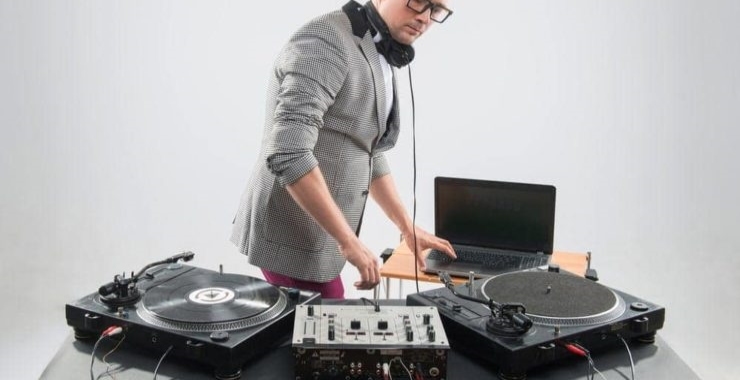
1. Free shows
When you’re starting, there’s nothing that establishes your identity better than letting people hear your kind of music. As a beginner, it’s important for you to showcase your wares, free of charge, notes Haidak. You won’t draw in people to a paid performance if they don’t know what to expect. Set up free shows online, and if possible, in person, too.
2. Competitions
Do you really believe that you are worth a fair shot? Entering a level playing field might be exactly what you need, and this is what DJing competitions are all about. Today’s top DJs started from being virtual unknowns, and many of them are products of competitions. The added excitement that comes when individuals go at each other is something that many people look forward to. This may also be an opportunity for you to start building on your fan base.

3. Giving to charity
If you are like Haidak, you also believe in the power of using music to bring people together. He uses his platform to apportion money for charities and worthy causes. This certainly is a welcome development, especially in the financial sense, but there’s no denying that this charitable work has added to the success of DJ Haidak’s reputation, too. You might want to do the same.
Haidak is a core artist of Audiophile Deep music. His track “Lifted” with Ramon Tapia charged through the Beatport Techno top 100 charts settling at #19. For more about his music, visit this page.
Music production is not for the weak. Although almost anyone with a powerful computer can dabble in music production, not everyone has the skill and commitment to become excellent in the craft. Here are seven things every beginning music producer needs to know to get better at music production.

Get people to hear the music, says DJ and music producer Haidak. It can be tempting to bury newly produced song, especially when retouches are in order. Be brave to let other ears hear it for some feedback. Stay focused on the task. With the DAW and other software on one’s computer, getting distracted is a sure consequence. However, strive to get the music done without distractions to get better at producing the fastest.
Hone one skill at a time. It may seem counterintuitive when desiring to get better at the craft faster, but focusing on a single aspect of producing at the beginning can help one develop skills more efficiently. It would be incredibly helpful to analyze other artist’s tracks to train the ear to hear and separate intricate sounds. Focus on the skills, not the gear. Many believe that gear can help one become a better producer.

Remember to put in hard work and commitment. There is no shame in using the simplest, cheapest gear out there as long as one is learning and constantly honing their skill. Produce daily. According to Haidak, beginning music producers who are determined to make this into a career must view learning and practicing daily as an opportunity to succeed.
Haidak is a rising DJ and producer gaining recognition in the global music industry. A DJ and producer based in Amsterdam, he has played in venues, large and small, across the world, including opening and closing set for Guy J and John Digweed in Leeds’ mighty Mint Club, before closing. To read more from Haidak, head over to this blog.
DJ Haidak, one of today’s up and coming DJs, has a wealth of knowledge when it comes to his kind of music because he started at a very early age. In fact, he often shares what he knows about the industry, including its early roots. This blog is his way of imparting what he knows about the evolution of electronic music.
Music had long departed from its resurgence as a consequence of the creation of electricity. The first man to dive into the electronic music realm was Elisha Gray. The device he used is what we know as the “musical telegraph.” Later, music was already being broadcast through phone lines and similar cabling systems, Haidak shares.
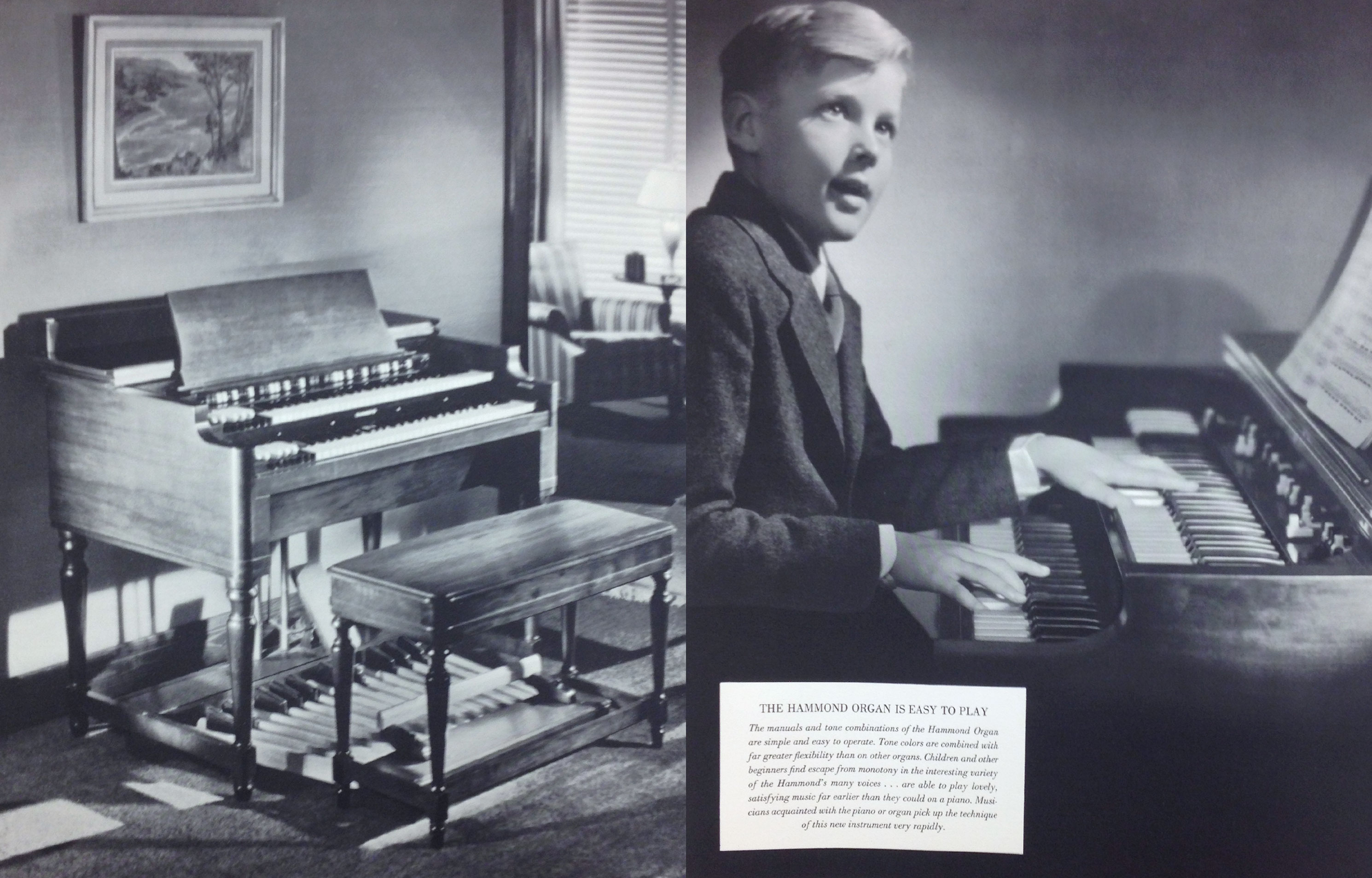
Eventually, the world was ready to usher in an instrument that could play electronic music on its own, which turned out to be the electric organ, popularized by Armand Givelet. Most experts agree that this was the very first synthesizer. This also paved the way for more advanced creations like the Hammond organ, which had had 91 tone wheels and various switches connected to drawbars that controlled the sound.

By the mid-50s, the actual term “synthesizer” was born. However, the early machine’s most advanced capability was that it could produce music when a paper with punch holes was fed into it, Haidak points out.
Soon enough, synthesizers of various kinds were being created by many enterprising individuals, and as the industry progressed, so was the practice of mass production. At this point, it still had a long way to go before things turned into what we recognize as the type of music that DJs are into today, which DJ Haidak will continue to discuss in a later blog.
Haidak is a DJ-producer who is gaining recognition in the global music industry. The electronic musician has taken the decks in venues across the world. He has played at festivals alongside names such as John Digweed, Nic Fanciulli, Stephan Bodzin, Reinier Zonneveld, Oliver Weiter, Henry Saiz, Kobosil, and many others. For more information visit this page.
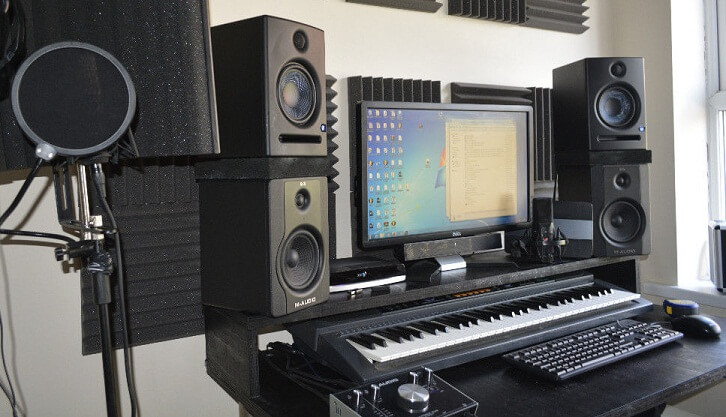
There are many perks to maintaining an at-home music studio. While an at-home music studio is a tiny, humble version of a full-scale recording and mixing studio, it can be equipped with professional equipment that produces quality tracks. In this post, DJ-producer Haidak shares the basics of a home studio.
Choose a room with a controlled environment. Most DJs and producers choose to build their studio in their bedroom so the atmosphere is calm and relaxed, perfect for late night recording, mixing, and mastering. A laptop or a desktop with powerful RAM is the core of a good home studio. Apple’s MacBook Pro and iMac are the most common picks by DJs and producers, but PCs by Dell and HP are the more practical picks for those starting out.
A digital audio workstation allows one to record, edit, mix, and master the sound that is translated by an audio interface or transmitted by a mixer. Before choosing between an audio interface and a mixer for the home studio, read on its uses and benefits. A MIDI keyboard is a producer’s best friend. Without this instrument, it would be difficult to key in sounds offered by a DAW.
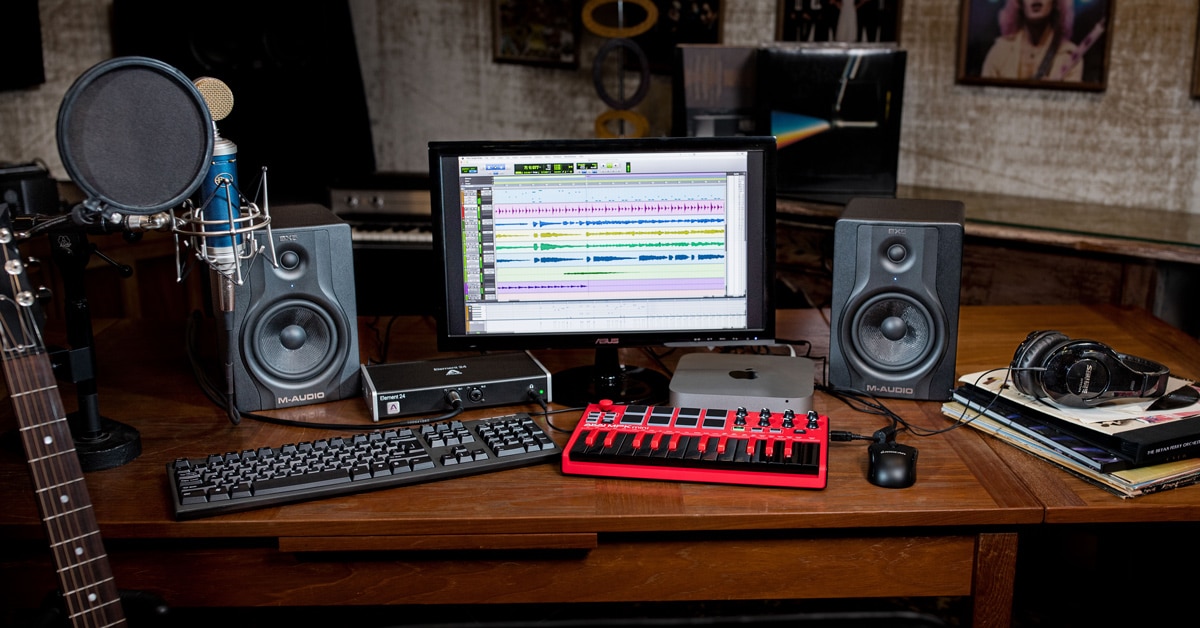
Microphones and cables may not be necessary for some, but these equipment pieces allow one to record their voice for a track, and podcast, or for supplemental sounds, mentions Haidak. A condenser microphone is the most ideal choice for DJs and producers recording at home. Voices and musical instruments are captured well by this type of mic. Speakers and headphones allow one to hear what they’re producing. A great pair is integral to impeccable mastering.
Haidak is a DJ-producer who is gaining recognition in the global music industry. The electronic musician has taken the decks in venues across the world. Even with opportunities to perform in bigger venues, he continues to participate in Amsterdam’s rave circuit that serves as a vital and vibrant part of electronic music culture. Head over to this page to learn more about Haidak.

When it comes to recording projects, having a good microphone is crucial. However, not all mics are created equal. While some might be good for recording voices, they might not be good for capturing the sound of instruments. DJ-producer Haidak shares what one should look for in a studio microphone.
Purpose
When setting up a home studio, it’s important to be familiar with two commonly used types of microphones– dynamic and
condenser.
When it comes to capturing the sound of instruments like drums and electric guitars, experts recommend a dynamic microphone that works well with sound of low to mid frequency.
On the other hand, Haidak shares that condenser mics work well with high frequency instruments like percussions, acoustic guitar, and piano. For those who are going to record vocals, this kind of mic captures the details and texture better especially in a home studio set-up. Experts recommend trusted brands like Sennheiser, Shure, Audio Technica, and Rode for those who want to invest in high-quality condenser and dynamic microphones. While these brands can be quite pricey, they are known for their accuracy in capturing sound.
Durability and convenience

A good microphone doesn’t have to be expensive. According to Haidak, there are many affordable brands out in the market that are easy to use, durable, and perfect for the home studio setup. These days there are also USB mics that one can easily plug and play into their computer. Apogee, Rode, Blue Microphones, and Audio Technica have their own USB microphone releases that are good investments for those who want to produce music or podcasts from the comfort of their own home studio.
DJ-producer Haidak has taken the decks in venues across the world, showcasing his own sound that covers a wide spectrum from heavy driving techno on one end to a more melodic and nuanced sound at the other end. Visit this blog for updates.
While Haidak is completely content and happy with his career choice of becoming a DJ, he explains that just like any other career, it takes a lot of time and effort to succeed. He also mentions that there are many considerations before taking on the life of a DJ, full time.

One of the more important considerations is the expense. For many reasons, becoming a DJ does not come cheap. Just like many musicians, DJs need gear – expensive ones. Below is a list of things that aspiring DJs may want to check and set aside a budget.
Education: It may come as a surprise to some that DJs need training as well. Like other musicians, self-teaching could be an option, but Haidak notes that DJ training has its advantages, from a boosted career start to even connections in the industry. However, basic lessons may set a person back as much as $500. And that’s just the introductory course.
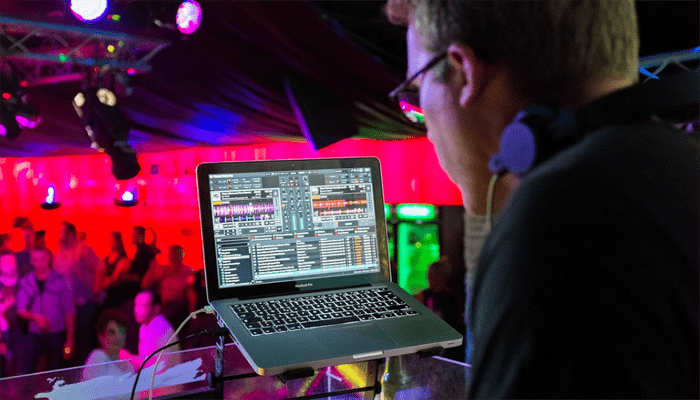
Mixer: Mixers are a must. They can cost as much as $2,500 for the best ones available. Used mixers, though, are much more affordable. Some may even be fetched for a hundred bucks. Haidak reminds everyone to get a mixer connected to turntables, CD decks, or laptops and computers. Those cost around $300.
Laptop : Speaking of laptops, DJs need to have a laptop for their gigs with at least 8GB of RAM and an i5 processor or higher. These go for around $500. For their homes, they can find a good PC at around the same price. DJ mixing programs are also needed, and they cost $100 to $300, Haidak adds.
DJ-producer Haidak is making a mark in the global electronic music industry. The talented musician has taken decks in venues across the world and shows no signs of stopping with a promising career ahead. Head over to this blog for similar reads.
Because of all the safety protocols and restrictions enforced during today’s global health crisis, countless people everywhere are forced to stay in their homes, including DJs. However, this downtime does not mean that DJs would let their skills and talent remain stagnant, or worse, rot.
Europe-based DJ Haidak shares expert advice on how DJs can keep their spinning skills on the level even at home.

1. Create new sounds through experiments.
As one would expect, DJs have a lot of time on their hands, which means they have plenty of time to mix sounds, use different techniques to come up with these sounds, and perfect new ways to mix these sounds.
2. Learn the quirks of the gear.
Haidak mentions that with all the pedals and boards DJs have, they can learn an endless combination of mixing. Even if a certain gear has been with a DJ for years, there are still many sounds that it can produce that a DJ has never heard before.

3. Listen to other DJs.
Iron sharpens iron. When listening to others’ spinning, DJs can find inspiration, learn a thing or two, or even find ways to improve their sound. But more importantly, listening to the work of other musicians keeps their minds busy and their creative juices flowing, according to Haidak.
On the club and festival circuit, Haidak is no stranger. He has played at festivals alongside names such as John Digweed, Nic Fanciulli, Stephan Bodzin, Reinier Zonneveld, Oliver Weiter, Henry Saiz, Kobosil, and many others. For more on Haidak and his music, click here.
Throwing parties comes with an expensive price tag. Individuals who are not willing to spend much on an event may be tempted to economize and make a few cuts on the services necessary to throwing a successful party. Here are a few reasons to never cut a professional DJ from the budget.
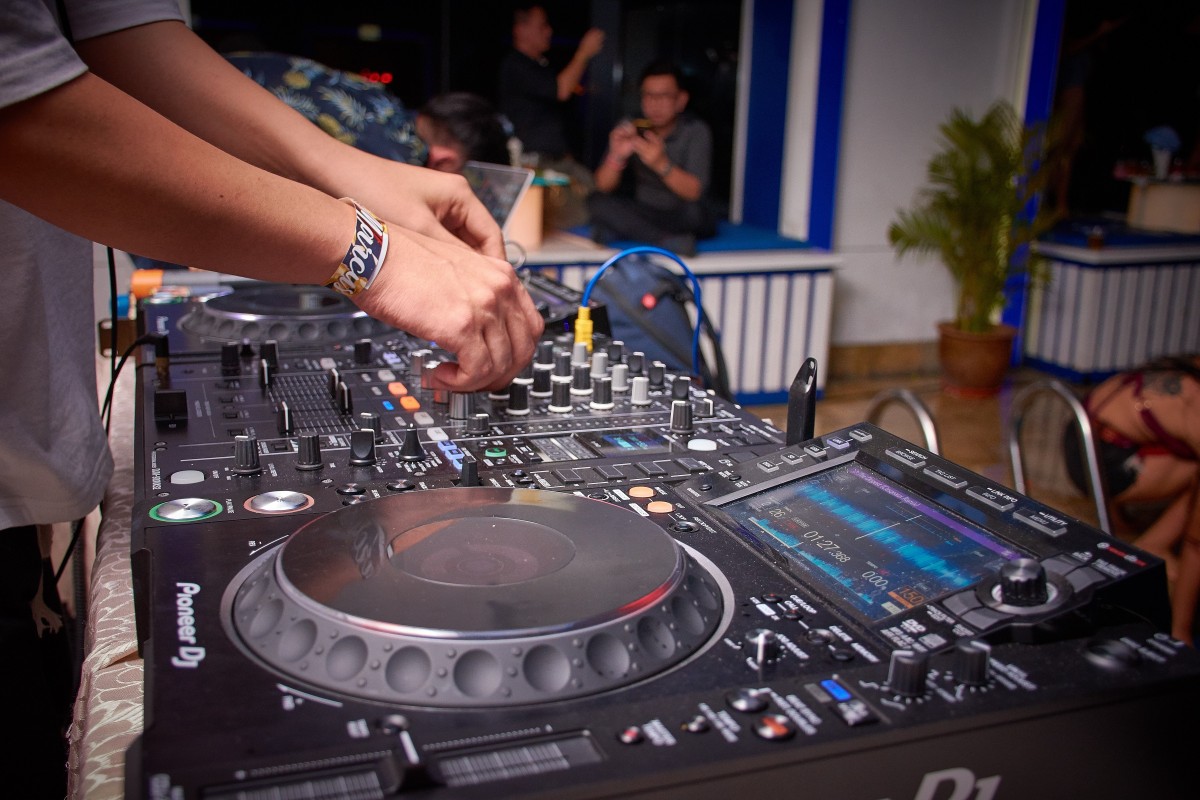
During weddings and other events, song selection plays a huge role in setting the mood for both celebrator and their guests. According to DJ-producer Haidak, leaving the job to inexperienced individuals or family members can ruin the scene. Weddings and other important milestones in one’s life require the expertise of a professional DJ as such skilled individuals can be relied on to put a great show during the most important of days.

A professional DJ practices professionalism throughout an event, steering clear of inappropriate jokes and songs, which can be a problem when friends and family are tasked with the job. Hiring a professional DJ prevents the event from becoming a possible mess. Professional DJs who play for audiences in bars and festivals are great at reading the crowd. They can play the right songs at the right moment, not giving room to any dull moments.
DJ-producer Haidak mentions that having a professional DJ in the team gives celebrators and planners peace of mind. When a professional is hired for the job, clients can rest at the thought of having someone experienced and responsible take on the role. Professional DJs listen to their clients’ ideas and can bring them to life.
DJ-producerHaidak’s sound covers a wide spectrum from heavy driving techno on one end to a more melodic and nuanced sound at the other end. Subscribe to this blog for more insights on the music industry.
In this day and age, anyone can just release their own music on the Internet. This allows audiences to enjoy a plethora of good music for free. A home studio setup is not as elaborate as a professional music studio. However, it should have all the goods that would permit one to make the best music from home.

A computer is an incredibly important equipment piece a producer needs both at home and in professional setup, says DJ-producer Haidak. Having a fast and reliable computer with a rich storage provides for easy processing and mixing of audio signals that will come from an audio interface or mixer. An audio interface allows a producer to record analog audio signals and translate them into digital ones that a computer understands and is able to separate. Mixers give more control for live sessions as these mix audio signals coming from different channels as a single track.

A good DAW or digital audio workstation allows a producer to edit and mix the signals the computer receives through an audio interface or mixer. Before purchasing and downloading a DAW, be sure that it is compatible with your computer. According to Haidak, invest in a quality studio microphone. Lousy microphones will detect noise that can be a job to edit out.
A pair of professional headphones or in-ear monitors will give you the correct audio impression of what is being recorded. It enhances one’s hearing and can make their music production experience a total delight. Cables are integral in the studio, whether these are XLR cables, 3.5mm jacks, or USB cables.
Haidak is a DJ-producer gaining recognition in the global music industry. The electronic musician has taken the decks in venues across the world. These days, he is showcasing his own sound that covers a wide spectrum from heavy driving techno on one end to a more melodic and nuanced sound at the other end. Read more from Haidak on this blog.